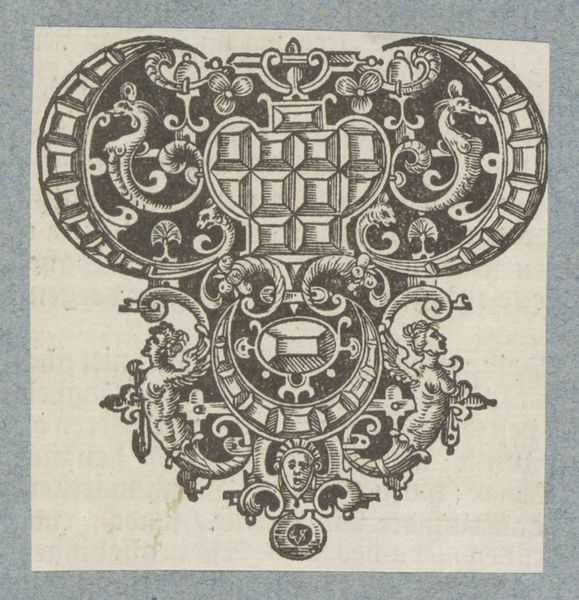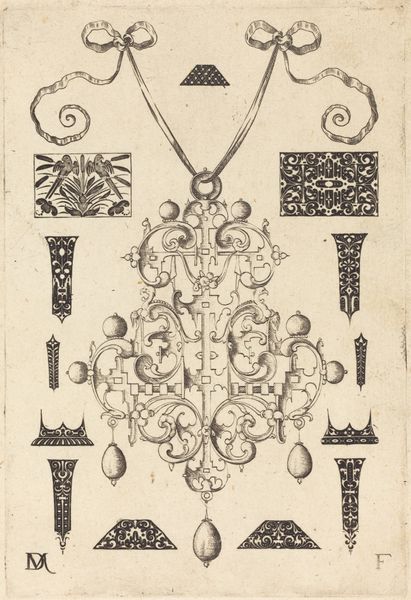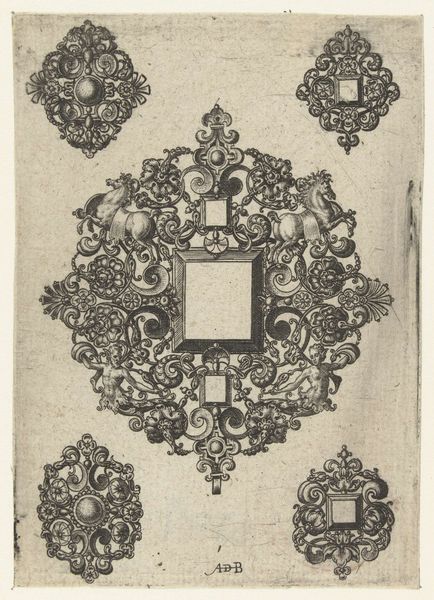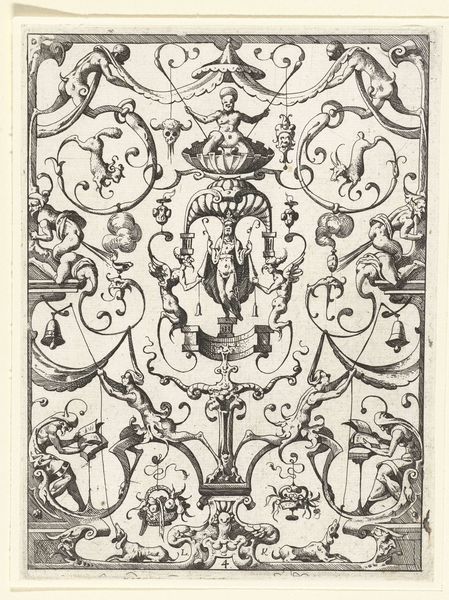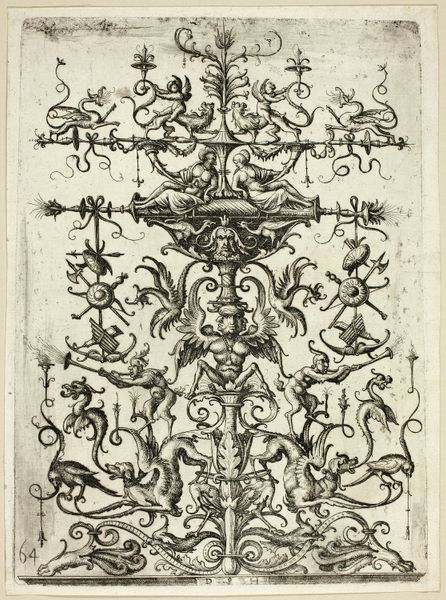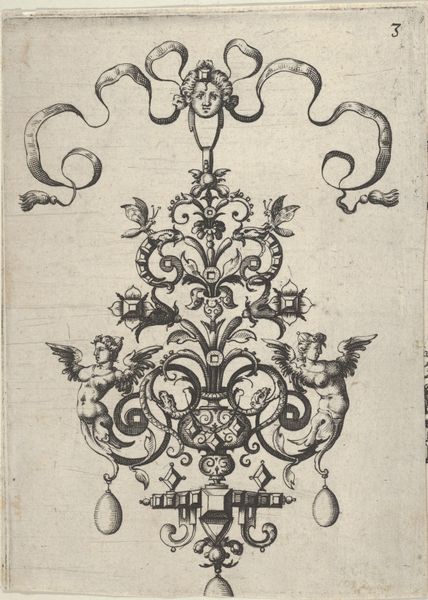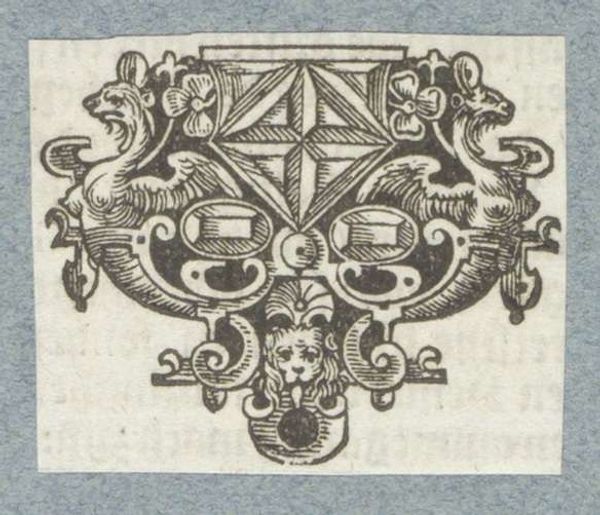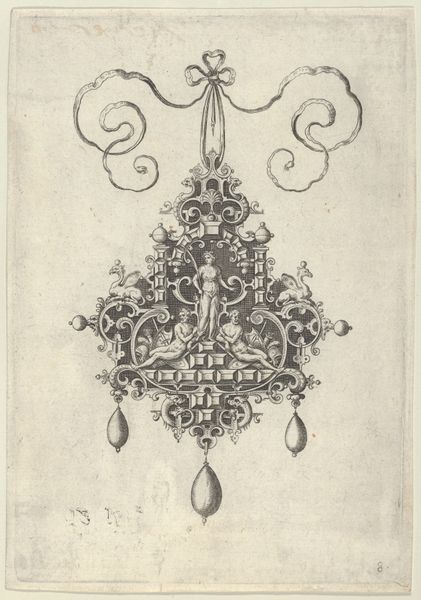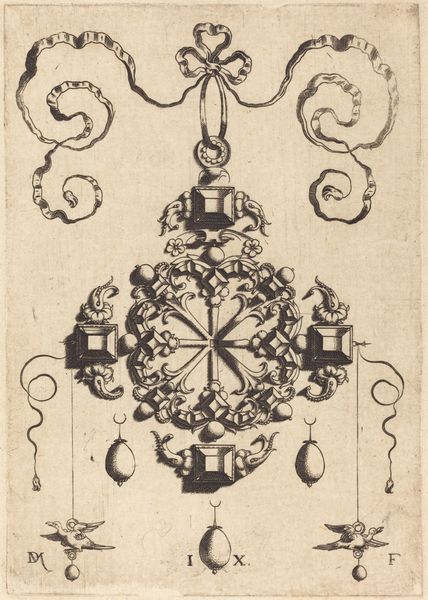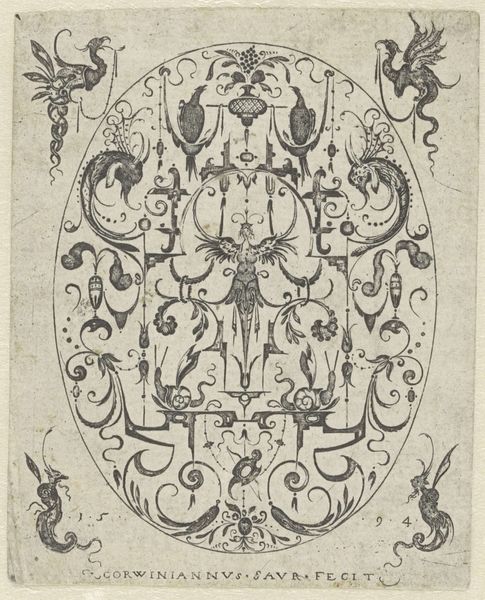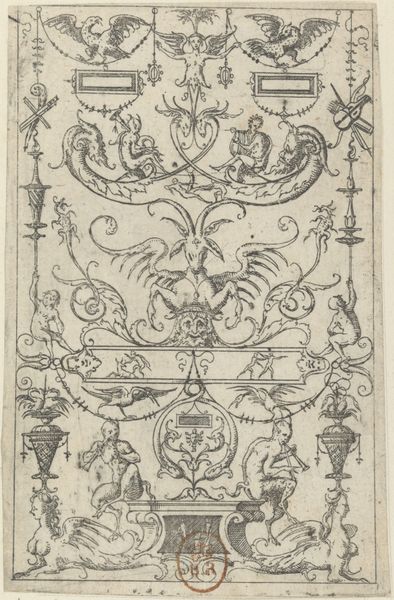
Dimensions: height 66 mm, width 54 mm
Copyright: Rijks Museum: Open Domain
This tiny woodcut, made by Christoffel van Sichem the Younger, presents a symmetrical design bristling with jewels, sphinxes, and a celestial globe. Sichem was a prolific printmaker, active in Amsterdam during the first half of the 17th century. Woodcut is a relief printing process. The artist carves into the surface of a wood block, removing the white spaces, and leaving behind the lines that will carry the ink. Look closely, and you can see the mark of the knife that Sichem used to articulate all the fine detail. The process demands great precision and control. The artist would have needed to apply even pressure to achieve consistent lines and solid blacks. Consider, too, the sheer labor involved in the production of this small, yet intricate print. It speaks to the rise of a culture of ornament in the early modern period, as well as the democratizing power of printmaking. Sichem’s design would have been relatively inexpensive to produce, and widely disseminated for the edification and enjoyment of a growing public. It bridges the gap between high art and practical craft, reminding us of the value of skilled handwork in a world increasingly shaped by industrialization.
Comments
No comments
Be the first to comment and join the conversation on the ultimate creative platform.

